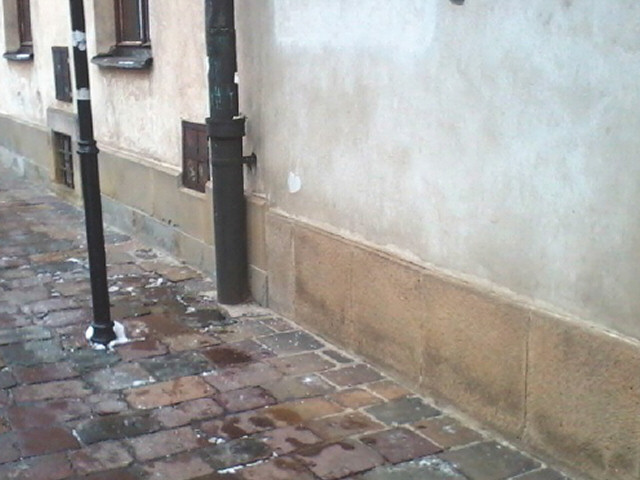IS THERE A BETTER WAY? 13

There is nothing like bad stones, there are only ones badly used.
This time a walk in Cracow’s Old Town. Near the famous Royal Route, among what is considered as historic gems on a European scale, in Kanonicza – one of the most ancient streets in Cracow, someone ordered, and someone performed, a renovation of the facades of neighbouring tenement houses. It is a good thing that a material was used which is perfectly appropriate in this place – it is a pity that no thought was given to it.
The heroes of today’s story are the neighbouring tenement houses – you can see in the photo that they border each other “through the gutter”. They were renovated more or less at the same time. They stand by the same pavement – nota bene, it is nice that it is paved with porphyry, not concrete cubes. So the conditions of use are the same for them: the same exposure to erosive forces of nature, the same impact of man’s cleaning operations – including those performed in winter with the use of salt. And what a different effect after just a few years of use.
In both cases sandstone plinths were used. In the first case they will serve for many years. Admittedly, the plinths draw water from the substrate and discolourations appear, because the contractor did not use any cutting layer between the pavement and the wall. But the material was selected in such a way that it will last for the proverbial hundred years. In the second case, the plinths can already be replaced – they peel and crumble.
Again the question arises: Is there a better way? Why was a material chosen that is not suitable for outdoor use? Why didn’t the contractor show a bit of stonemasonry knowledge and get advised on a suitable material? Why was the image of the symbol of durability – natural stone – once again put at risk? Or is it that once again only the criterion of price was decisive for the outcome of the tender …?
Source: Kurier kamieniarski
Author: Bogusław Skolak | Published: 25 June 2014
